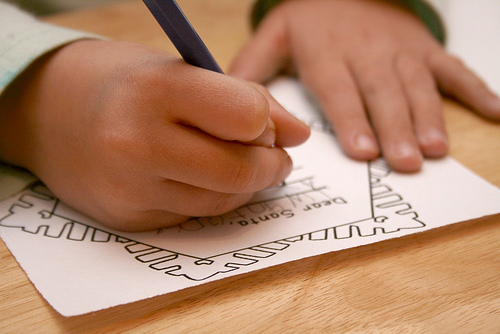Want to get more kids into reading? Turn them on to writing. Writers are readers. And one of the best tools used to shape a person into a writer is the deadline. It’s why I’m a fan of National Novel Writing Month, known affectionately by its abbreviation: NaNoWriMo.
The goal is to write a 50,000-word novel during the month of November. Amateurs as well as published authors accept the challenge, and carve out enough time to write roughly 1700 words a day. (To give you an idea of how much that is, this post is just under 500 words.)
It’s not limited to adults; thousands of students across the country participate each year. The program’s website (www.NaNoWriMo.org) even has a section devoted especially to young writers.
The idea isn’t to churn out a masterpiece in thirty days; it’s intended to show everyone, including kids, that a creative spark lurks inside. The key to unleashing it is a deadline.
From my own experience, I’ve found that deadlines help immensely – even while I sometimes curse them. Sure, they add pressure to the work, but they also introduce three crucial elements.
The first of these is focus. If you tell a student that they have a month to complete a project, they’ll often find plenty of distractions to keep them off task. But if a project is due the next day, everything else falls to the side and they get it done.
Deadlines also inject a touch of bravery into our work. We might feel angst over the ticking clock, but it prevents us from overthinking what we’re writing. Young writers usually make the mistake of editing too much as they create, rather than trusting their impulses and just letting the words spill out. A deadline is freeing, because it forces you to charge ahead without nitpicking over each syllable. And the work, surprisingly, is often better for it.
And lastly, a deadline provides a finish line to your story or essay. Some students meander through their writing, unsure of how or when to wrap it up. A deadline is writing’s version of the two-minute warning. As the clock creeps closer to the end of the assignment, young people begin to visualize how to put in the final piece.
Many people, including students, believe that they have a novel inside them. Whether it’s NaNoWriMo, or simply a two-hour short story challenge, a deadline keeps young writers on point. It helps them to focus, gives them courage, and shows them the way to the final paragraph. When it’s over, they’re able to say: “I’m a writer.”
Dom Testa is an author, speaker, morning radio show host, and has kept a ficus tree alive for twenty two years. He’s also the founder and president of The Big Brain Club, a non-profit foundation that helps young people embrace the idea that Smart Is Cool. More info at www.DomTesta.com.
Earnest Parenting: help for the parents of young writers.


